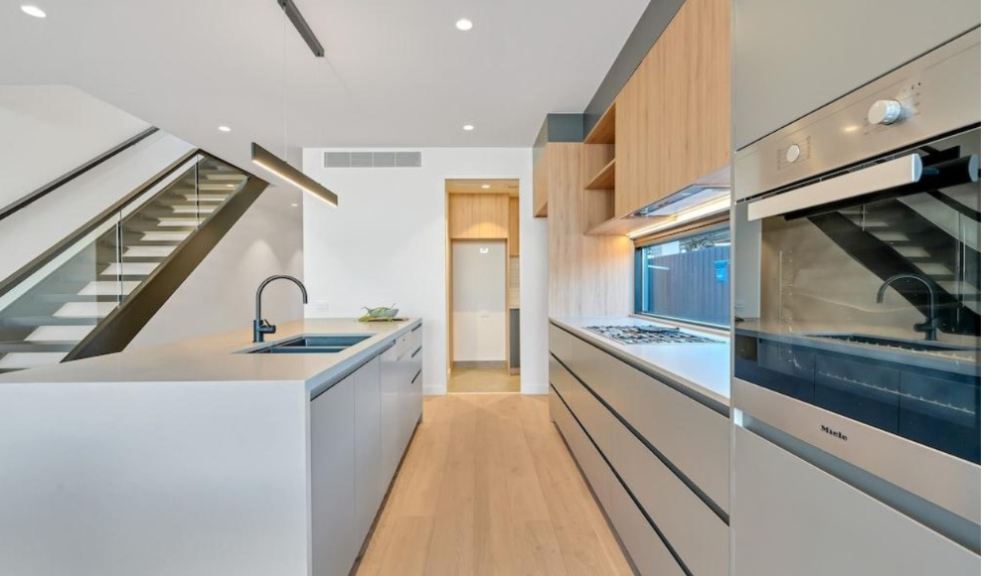
The kitchen furniture market to end 2023 at US$75.99bn – trends and projections
Kitchens are the main rooms homeowners or property owners are looking to revitalise, and they are the element that has the most power to drag the price of an establishment up or down. It’s the space where most families spend the better part of their time, as their purpose throughout time has expanded to include conducting work tasks, accommodating social gatherings, and having children execute school tasks, to name a few actions occurring here.
IKEA, Otto, or Haverty Furniture—regardless of the furniture brand you’re eyeing, they’ll likely see their business bottom line improve significantly in the next year. As the pandemic changed how people perceive their spare time and their homes’ significance, the cooking space has started to see more and more interest from homeowners. Experts predict that the trend will follow suit, and decreasing inflation rates and a better economic landscape infiltrating the following year will be beneficially reflected in the kitchen furniture market. So far as we know, this sector’s profit is forecast to grow at a CAGR of 9,32% to reach US$77.76bn as the calendar winds down. As user penetration grows and targets 12.6% by 2028, kitchen providers have only reasons to rejoice and explore the preferences and needs of today’s picky purchasers.
Why is the kitchen furniture market growing so fast?
Wherever you look, every homeowner is likely to be torn between connecting as many of their kitchen appliances to WiFi or Bluetooth and managing their devices from afar, despite time constraints. Furthermore, home proprietors are ditching old cabinetry pieces in favour of modular, built-in ones with several standard-sized furniture parts. They’re eyeing all sorts of avant-garde features that can level up the ease of cooking, safety, and hygiene in the room, such as handleless kitchens that make cleaning around the knobs a thing of the past. The lack of handles equals more difficult access to the insides of the cabinetry for children and less stress about dirtying the pieces when one rapidly needs to use them.
The desirability of smart and modular kitchens has grown by leaps and bounds lately, leading to a rise in restoration and remodelling projects. Plus, the popularity of adaptable and multi-purpose items and an ascending predilection towards the look and appeal of the kitchen are forecast to push the market’s barriers to new frontiers.
The market for global kitchen furniture and fixtures stood at $12,551 million two years ago, when having a website as a manufacturing or retail business was more of a bonus than customary. Thanks to an increasing share of products that are multi-functional and versatile, as well as the easiness of buying online, paying through methods like BNPL or Klarna, and having merchandise delivered quickly at low to zero fees, home proprietors have all the access to products of their liking at incredibly convenient rates.
This availability and advance on the market spurs interest in kitchens and will encourage those put off by the limited funding methods or insufficient diversity to finally create the kitchens of their dreams on their own terms.
The prevalent trends in kitchen furniture in the U.K.
U.K.’s kitchen furniture market has created a lot of demand for these vital pieces, whether you look at homeowners looking for a complete overhaul of their proprieties or just remodels and renovations. The primary and crucial change always concerned the cooking area’s most used and relevant kitchen furniture. From freestanding furniture to reeded glass, U.K. homeowners already have their eyes on the trendy sets freshly taken out of the oven, such as:
Internal storage
Creating storage out of interior spaces has been in vogue in 2023 and will continue to rock the stage well into 2024, too. The intelligent method of safeguarding kitchen elements ranging from dishes to appliances has been specifically prevalent in kitchens, focusing on storing plenty of stuff but creating the opposite appearance. The beauty of hidden breakfast stations and other drawer ideas is that you can cover the entire morning-to-evening routines, whether it’s espresso machines, blenders, toasters, or bread recipients, to name a few. Once you’re done using these items, you can conceal them behind some quality doors and all the mess and clutter become nonexistent – until you clean it up.
Reeded glass
It’s not the first time you’ve seen reeded glass in an overwhelmingly large number of kitchens. This trend has prevailed even in small kitchens and gained traction while homeowners shifted away from mottled or frosted glass, searching for a material that can guarantee light and privacy. This advantage of the ribbed look is accompanied by the inevitably added spark of elegance and appeal. This sleek-looking design works on more places in the furniture, such as cabinet fronts and insert panels, which is common in bathrooms as well. If intimacy and glamour sound desirable, you might want to check similar styles out on platforms like Pinterest or Instagram.
Marble look
Marble has long been a lavish, refined, and exquisite choice for kitchens, but it’s the recent times that its popularity has skyrocketed even among kitchens looking for relatively modest looks. Marble provides material quality, making furniture stand the test of time and do well despite the wear and tear they’re exposed to. Furthermore, it can create numerous styles and is versatile in more areas, whether a marble backsplash, countertop, or island entices you. Marble pieces are seen as statement elements, so if uniqueness and longevity are what you’re looking for and you’re sitting well, you can’t go wrong with this choice.
Unsurprisingly, dynamics differ considerably from region to region.
The market for kitchen furniture and fixtures is split depending on the end-user and distribution, material, and type researched. Regarding the material, they’re segmented into wood, metal, and other material types. The countries that contribute the most significant revenue to the market are the U.S., U.K., Canada, Netherlands, Belgium, Switzerland, and others, as well as countries in the Rest of Asia-Pacific, followed by the Asia-Pacific. The Rest of the Middle East and Africa take the last places in the top of contributing countries to the global revenue by market share.
Due to the rise in the penetration of smart and modular kitchens in North America, this region leads the market for kitchen fixtures and furniture by a wide margin.











